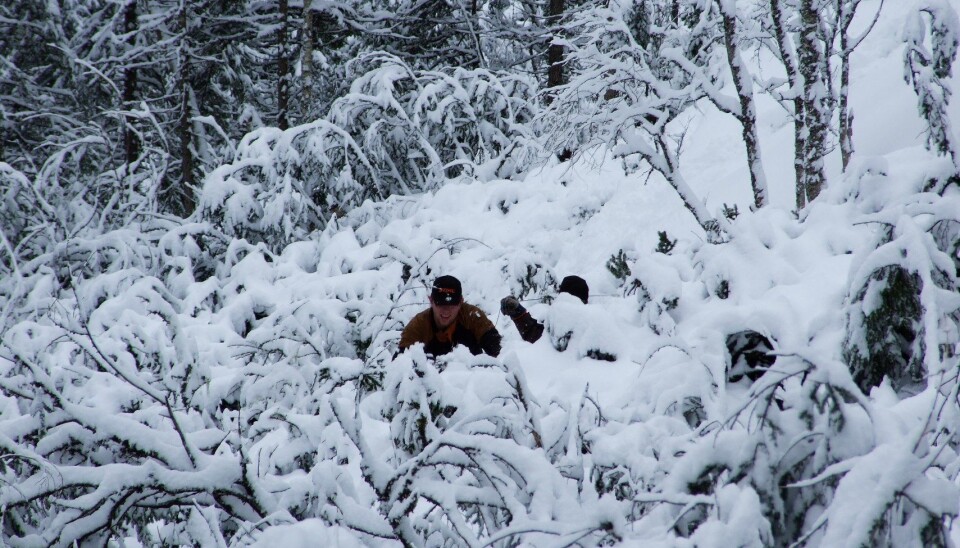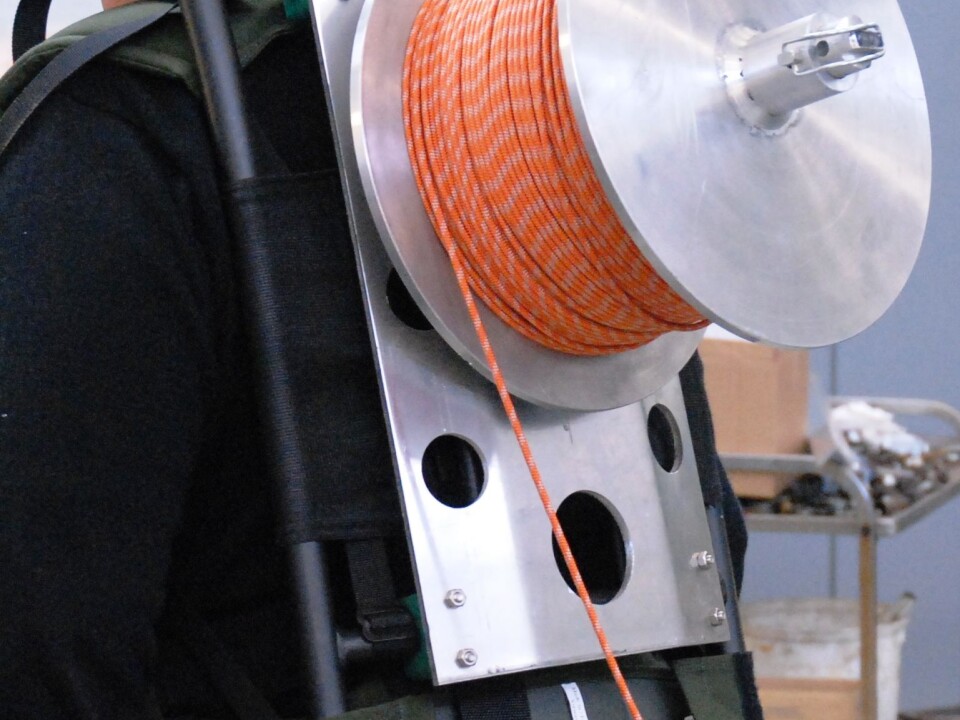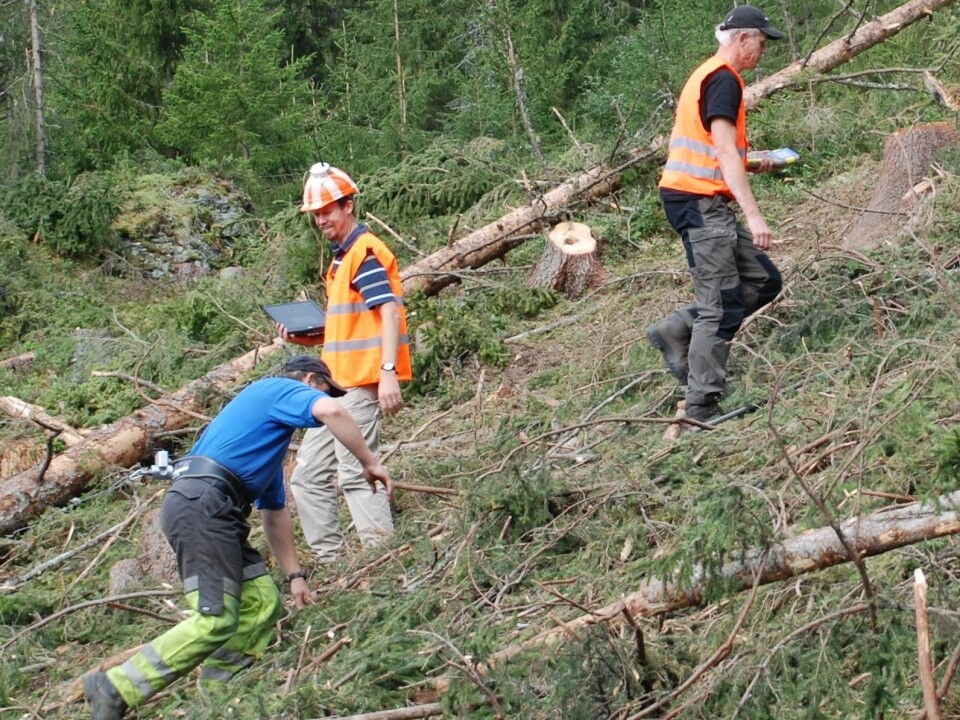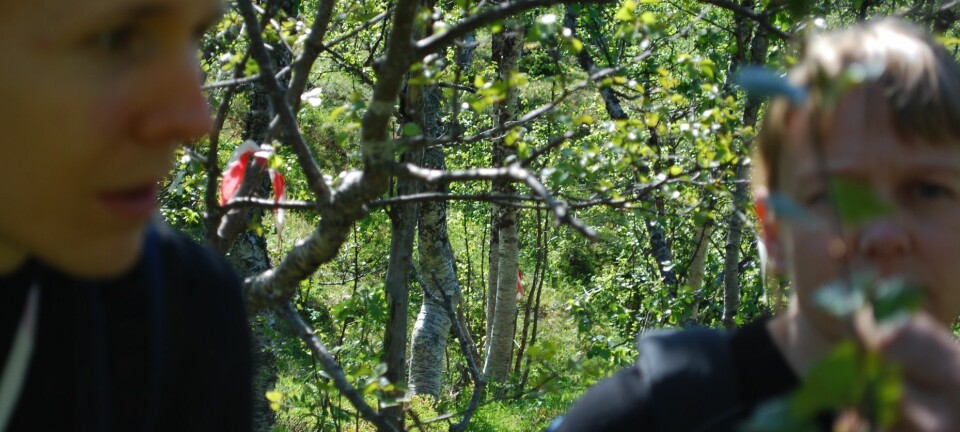
New gear eases logging operations
New portable gear for cableways makes strenuous Norwegian logging work a little easier.
Denne artikkelen er over ti år gammel og kan inneholde utdatert informasjon.
Science is not only the study of nature, text and people. It also involves hands-on development of products for very down-to-earth areas of manual labour.
A new carriage for a skyline system for logging is soon fully developed by the Norwegian Forestry and Landscape Institute.
Skylines are cableways used to extract timber from very steep terrain, which Norway is famous for. The carriage is used for winching the timber up to the skyline and then transporting it along the line to the roadside landing.
The novelty of this carriage is that it’s built for a skyline with only two, and not three lines, and it features a remote controlled extendable hoist line. This saves on investment and operating costs, and reduces the workload considerably.
From farmers to logging companies
Norwegian forestry has changed a lot in recent years. The timber used to be cut and sold by the farmers who own the forest. Now logging is conducted by professional firms with a constant need for better mechanical equipment.

“Not many Norwegians want to work in the forest anymore. Now we have Lithuanians, Latvians and Poles cutting Norwegian trees. But the companies hiring them are domestic and they’re our customers,” explains Morten Nitteberg, a scientific engineer.
A difficult job
New loggers, same old forests - it is still a very tough job. Nitteberg is developing equipment to make the work easier and safer.
“Norway has rugged terrain that makes it difficult, strenuous and costly to cut and remove timber,” says Nitteberg.
Recently it became all the more important that timber is extracted. In a storm that struck in West Norway last December, countless cubic metres of timber were uprooted and blown down. If not removed, these damaged trees will be attacked by bark beetles, which will multiply and endanger whole forests.
Much of these areas aren’t accessible by tractors, and bulldozing new roads into the forest is not always a viable solution and is often controversial because of its visual and actual impact. This is where cableways enter the scene.

A suspended cableway, which is mounted on a truck or all-terrain vehicle, is rigged up near a forest road.
The machine is braced with guylines so that it stays put under the load of the logs that are being hauled down the slopes.
“We’re talking about forces of up to 20-30 tonnes in the system. It takes time, and it is heavy work,” says Nitteberg.
Improved equipment

The lumbermen have to pull the steel cable or rope up the slope when setting up the cableway, which can be up to 400 metres long.
Nitteberg's job is to improve equipment and methods for reducing the workload and improving safety.
He equips forest workers with load cells and conducts time studies in quantifying the work.
What works best − traditional steel wire or new nylon rope? And maybe more importantly − what are the ergonomic benefits?
“For instance it makes a big difference if a piece of equipment weighs 7 kg instead of 10 kg. This means a lot if you have to climb up a tree to rig up the anchor end with the equipment on your back," says Nitteberg.
The loggers and the logging companies are also actively involved in testing the new carriage. So far it seems like it saves time and eases the strain.
The development of the carriage will be completed and tested by the spring of 2013. The Research Council of Norway has financed the R&D but a commercial firm will manufacture the carriage after a round of contract bidding.
—————————————
Read this article in Norwegian at forskning.no
Translated by: Glenn Ostling
































